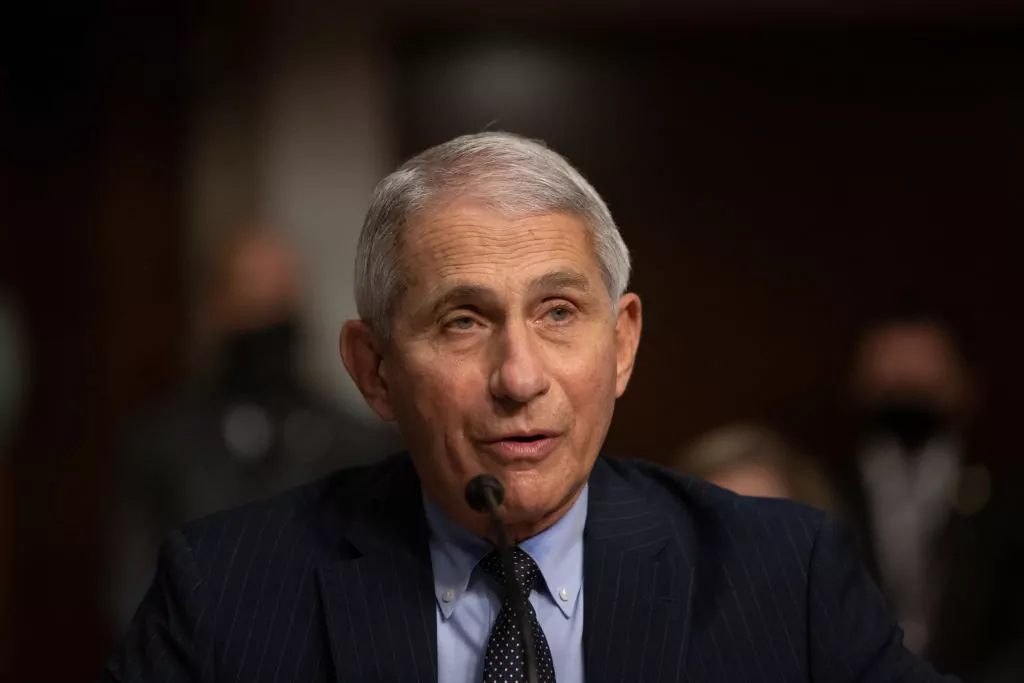A Senate investigations subcommittee released a report concluding that federal health agencies concealed information from the public about the risks of myocarditis following mRNA COVID-19 vaccination.
Sen. Ron Johnson (R-WI), chairman of the Senate Permanent Subcommittee on Investigations, released the panel’s report on Wednesday. The Biden administration was aware of the risks posed by mRNA vaccines and cognizant of wide gaps in data collection on the matter, the committee agreed. However, the Centers for Disease Control and Prevention, the Food and Drug Administration, and other health agencies made concerted efforts to downplay and delay warning the public about the risks of adverse heart conditions associated with the Pfizer and Moderna mRNA vaccines, lawmakers concluded.
Myocarditis and other heart conditions developed as a result of taking the mRNA vaccines were also widely underreported because doctors and healthcare systems often failed to report data about cardiac events in the CDC’s primary network collecting such information, the Vaccine Adverse Event Reporting System. CDC officials aired concerns about the underreporting, stating that “providers aren’t reporting these cases to VAERS,” per the report.
While CDC officials were aware of the growing risk of myocarditis coupled with the lack of nationwide reporting about it, the agency ultimately decided against sending out a Health Alert Network message, or a warning about myocarditis that was initially going to be distributed nationwide as a HAN notification, lawmakers wrote. HAN alerts are the CDC’s primary method of sharing cleared information about urgent public health incidents with public information officers, federal, state, territorial, tribal, and local public health practitioners, clinicians, and public health laboratories.
Instead of issuing a HAN alert, health officials opted to send guidance on “clinical considerations” regarding the risks of myocarditis posed by the vaccine. Even then, the language in the guidance was watered down significantly to exclude warnings about avoiding intense physical activity after receiving an mRNA vaccine despite concerns from officials.
Internal documents obtained by lawmakers detail back-and-forths between health officials about the risks they believed mRNA vaccines posed and how much information they should share with the public.
During a Feb. 22, 2021, Vaccine Safety Technical Work Group meeting, CDC officials discussed data showing that out of 980 death reports recorded in VAERS, “the cause of death [if known] was often cardiovascular.” VaST was comprised of officials from the CDC, FDA, National Institutes of Health, and other entities.
After another VaST meeting on April 5, 2021, the CDC’s notes from the conference stated that the Defense Health Agency “feels there is a high likelihood that cardiac symptoms following COVID-19 vaccination represent a hypersensitivity eosinophilic myocarditis.”
During that meeting, CDC and FDA officials also discussed information flagged by Israeli health officials in February 2021 about “large reports of myocarditis, particularly in young people” who took mRNA vaccines.
“This was significant because, at the time, Israel was vaccinating much more of its population, including younger people, compared to the U.S.’s vaccine campaign,” the Senate report noted.
Following the meeting, CDC documents stated, “VaST appreciated the excellent presentation of data from Israel’s spontaneous reporting system. The signal for myocarditis that colleagues from Israel described should be further examined in U.S. safety monitoring systems.”
On May 24, 2021, draft VaST meeting notes exchanged between U.S. public health officials included the question, “Is VAERS signaling for myopericarditis now?” The answer: “For the age groups 16-17 years and 18-24 years, yes.”
The CDC’s vaccine safety team lead in the COVID-19 Vaccine Task Force, Dr. Tom Shimabukuro, and another CDC official who worked on the team, Dr. John Su, were among those who warned that reported rates of myopericarditis were artificially low. CDC official Dr. Demetre Daskalakis also warned that the public might not get the full picture of the risks to heart health posed by the mRNA vaccines. At the time, Daskalski contributed to the development of HAN.
“The reporting rate of myopericarditis following administration of the mRNA COVID-19 vaccines was low and estimated to be 0.7 per million doses of vaccine administered. However, the limitations of passive surveillance such as under-reporting, lack of a control group, missing and incomplete data make it challenging to assess causation,” Shimabukuro wrote in a document sent to CDC colleagues in March 2021.
On May 17, 2021, Su wrote to colleagues that his team had looked for reports of myocarditis in VAERS: “We’re not finding them. Seemingly, providers aren’t reporting these cases to VAERS.”
The Senate report wrote that the “notion that health care providers may have not been aware of, or that they were slow to learn about adverse health risks associated with the Pfizer and Moderna COVID-19 vaccines is very troubling. Given that CDC officials were aware of the growing risk of myocarditis coupled with the lack of nationwide reporting about it.”
The primary point of contention in the Senate Permanent Subcommittee on Investigations report regarded the CDC’s final decision not to issue a HAN message, instead issuing what it characterized as a diluted statement on “clinical considerations” on the agency’s website about myocarditis.
The language for the “clinical considerations” alert initially included a warning to avoid strenuous physical activity that could trigger a cardiac event. That language was later removed.
“Due to concerns for sudden cardiac events while the heart recovers, consider restricting patients with myocarditis from a rigorous activity like competitive sports for at least 3 months until cleared by a healthcare professional,” the original alert read.
The final alert posted on May 28, 2021, stated that “increased cases of myocarditis and pericarditis have been reported in the United States after mRNA COVID-19 vaccination (Pfizer-BioNTech and Moderna)” but did not contain language about reducing rigorous activity.
The mRNA vaccines were developed using novel technology that was approved for the first time for public use during the COVID-19 pandemic. They are synthetically made in labs, creating a new protein that temporarily mimics a piece of the virus that the body then develops a defense against. Traditional vaccines inject the actual virus into the body to trigger an immune response.
Public health officials, such as former Director of the National Institute of Allergy and Infectious Diseases Dr. Anthony Fauci, heavily pushed the mRNA vaccines as a safe method of protection against COVID-19.
“I feel extreme confidence in the safety and the efficacy of this vaccine, and I want to encourage everyone who has the opportunity to get vaccinated so that we could have a veil of protection over this country that would end this pandemic,” Fauci said as he received the Moderna vaccine in December 2020.

WHITE HOUSE DECLARES LAB LEAK AS ‘TRUE ORIGIN’ OF COVID-19 IN WEBSITE REVAMP
During an October 2021 interview with National Public Radio, Fauci again downplayed the risks posed by mRNA vaccines when pressed on the matter.
“It’s a very, very, very rare risk. I mean, the myocarditis that has been seen as a rare adverse event is … predominantly in young men, not generally as young as 5 to 11, but there certainly could be some overlap there. So that’s something that you pay attention to. But when the FDA looks at the data and they do a risk-benefit analysis, which is, what is the risk of an individual within that age group getting COVID-19 and getting a serious outcome versus the risk of getting the adverse event from the vaccine? They’ve determined very clearly that they weigh very heavily towards the benefit, as opposed to the risk,” he said.

















